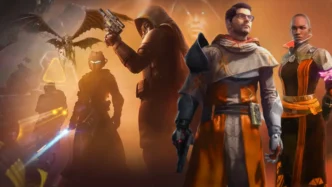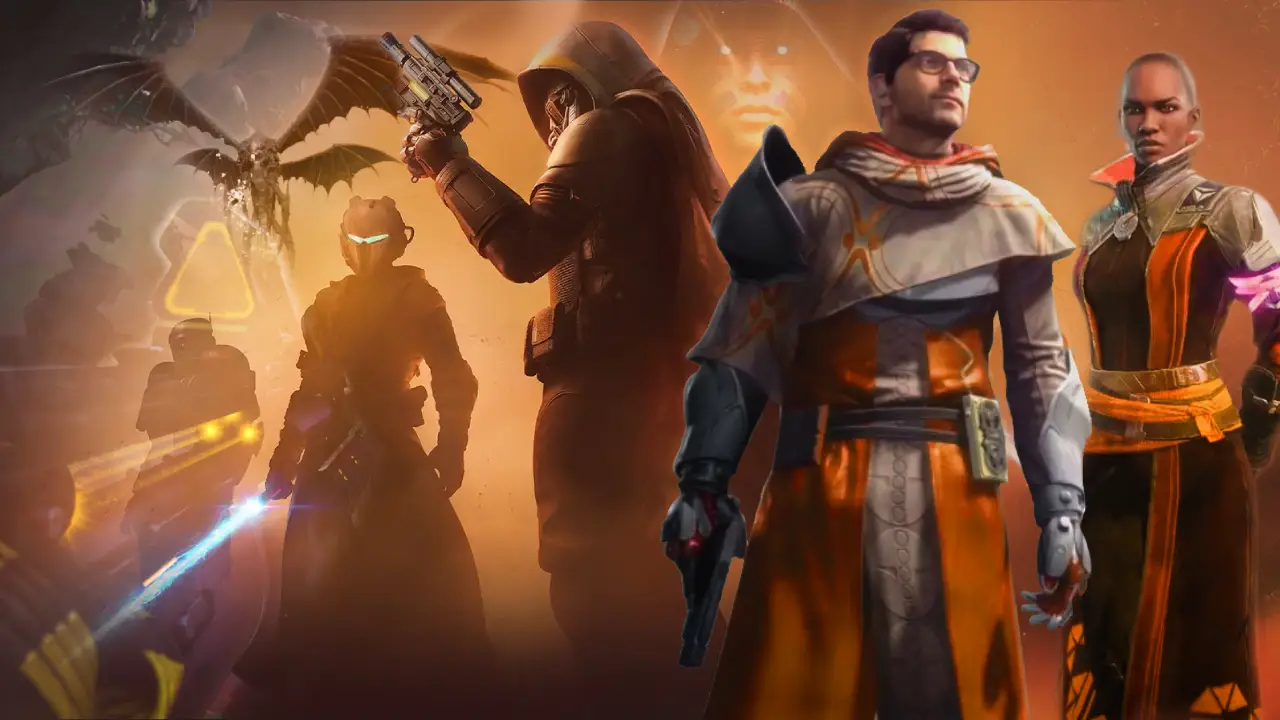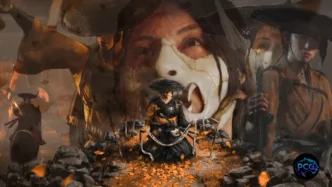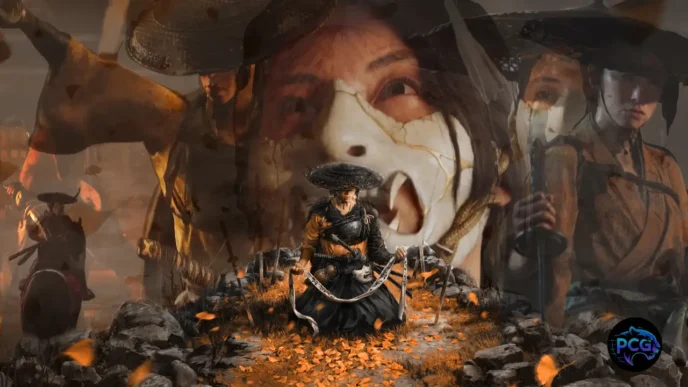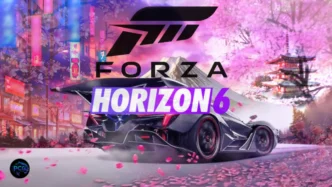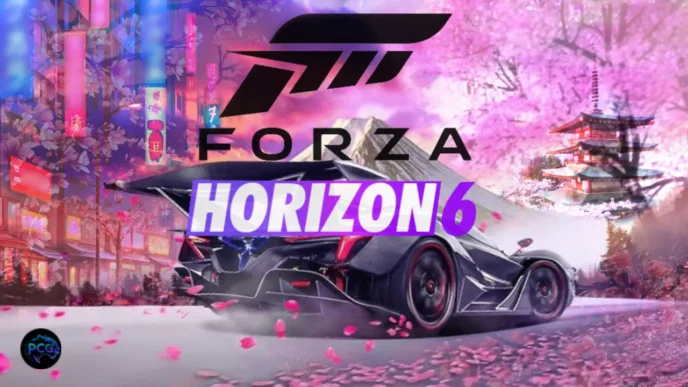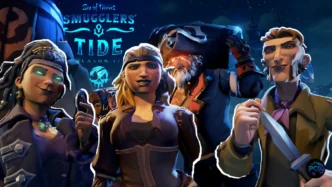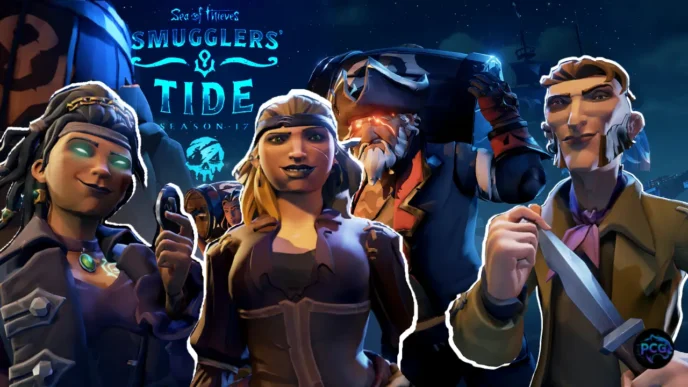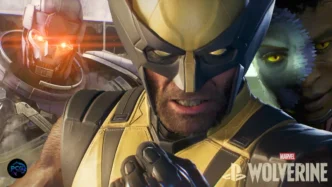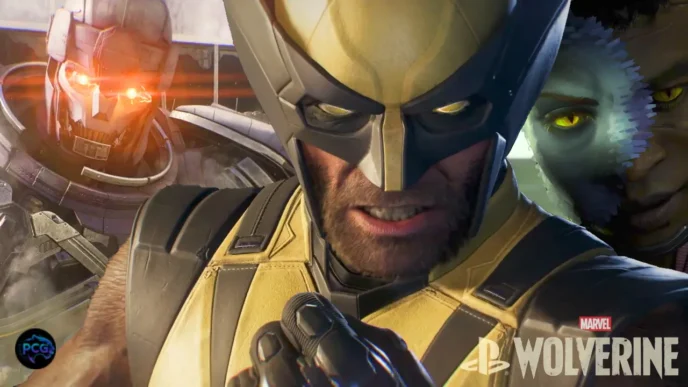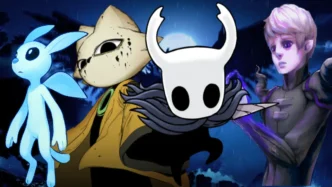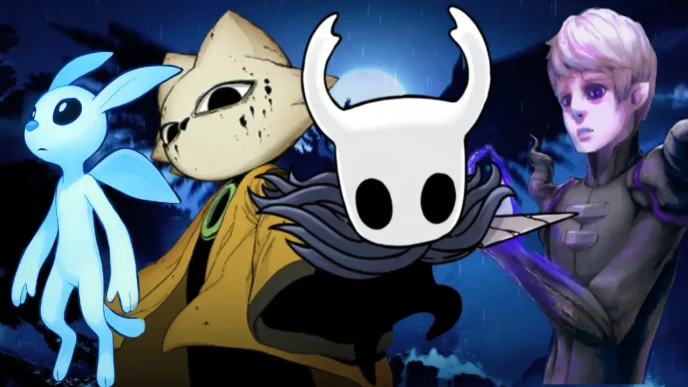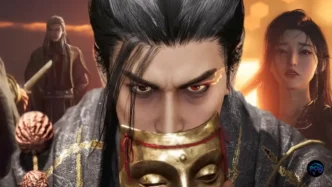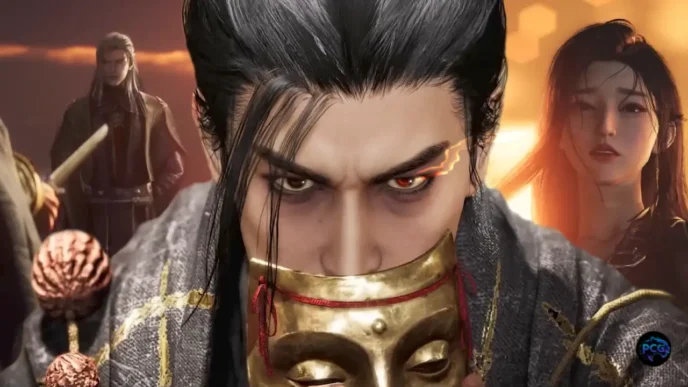After the epic conclusion of The Final Shape, Destiny 2 The Edge of Fate fans have been eagerly awaiting the next chapter in the Guardian’s journey.
The Edge of Fate promises to explore uncharted territory with The Nine taking center stage, introducing mysterious new powers and a fresh storyline that diverges from the familiar Light and Dark saga we’ve known for years.
I’ve spent over 80 hours diving deep into this expansion, experiencing everything from the 14-mission campaign to the challenging new raid, The Desert Perpetual.
While The Edge of Fate delivers some genuinely compelling moments and introduces fascinating lore connections, it also stumbles in areas that will frustrate both newcomers and veterans.
We felt this expansion sits somewhere between ambitious and uneven – offering enough quality content to satisfy dedicated players while leaving us wanting more polish in key areas.
You’ll find moments of brilliance alongside familiar Destiny growing pains that we hoped would be resolved by now.
| Game Info | Details |
|---|---|
| Genre | Open World, FPS, Multiplayer, MMO |
| Platform | PC, PlayStation 5, Xbox Series X/S |
| Release Date | March 15, 2025 |
| Developer | Bungie |
| ESRB Rating | T for Teen |
| Price | $49.99 (Standard), $99.99 (Collector’s Edition) |
Table of Contents
Destiny 2 The Edge of Fate Story and Characters
The Edge of Fate introduces us to a 14-mission campaign that takes place six months after the events of The Final Shape. The story revolves around mysterious disturbances in the outer rim of our solar system, where The Nine – those enigmatic entities we’ve only glimpsed before – finally step into the spotlight as both allies and potential threats.
The campaign starts frustratingly slow, with the first three missions feeling more like extended tutorials than meaningful story beats. You’ll spend considerable time learning new mechanics like Matterspark manipulation and dimensional phasing, but the story reasoning for these abilities feels forced and convoluted.
I found myself skipping cutscenes during the early missions, something I rarely do in Destiny content.
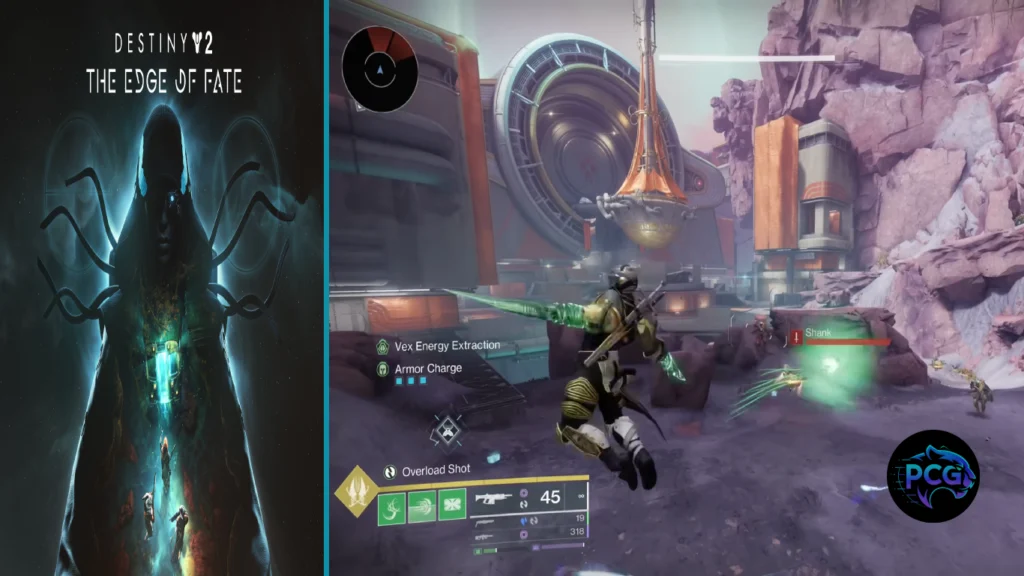
However, once the campaign hits its stride around mission five, the narrative becomes genuinely compelling. The introduction of Lodi, a rogue member of The Nine, provides some of the best character development we’ve seen in Destiny 2. Her relationship with our Guardian feels personal and earned, especially during the emotional sequence where she reveals the true cost of transcending physical form.
We were genuinely moved by her sacrifice in mission eleven, and the way Bungie connected her story to long-standing lore about the Jovians was masterful.
The Nine themselves are portrayed with the perfect balance of otherworldly mystery and relatable motivation. Rather than being distant cosmic entities, they’re revealed as beings struggling with their own existence between matter and void. Their dialogue, delivered through environmental storytelling and cryptic voice lines, adds layers of depth to Destiny’s already rich mythology.
Key Takeaway:
- The new matter manipulation abilities create genuinely innovative gameplay when they work, but technical inconsistencies prevent them from feeling reliable in crucial moments.
While the story stumbles in pacing during its opening hours, its emotional depth and lore payoffs keep long-time fans invested through a satisfying conclusion.
Gameplay Mechanics
Destiny 2 Combat & Abilities
The core gunplay that makes Destiny 2 special remains as tight and responsive as ever. Weapon handling feels precise, and the new weapons introduced in The Edge of Fate maintain Bungie’s high standards for feel and feedback.
The pulse rifle Voidwhisper and the exotic hand cannon Matter’s End quickly became favorites in my loadout.
Where things get interesting – and occasionally frustrating – are the new location-specific abilities tied to Kepler’s unique environment.
- Matterspark allows you to temporarily phase through solid matter, creating new traversal options and escape routes during combat.
- Mattermorph lets you briefly become incorporeal, avoiding damage but preventing you from dealing any in return.
- Relocator enables short-range teleportation between matter states.
These abilities sound incredible on paper, and when they work correctly, they create genuinely unique gameplay moments. I’ll never forget using Mattermorph to phase through a Cabal shield wall, then immediately casting Relocator to appear behind their formation for a devastating super attack.
However, the abilities are inconsistent – sometimes Matterspark doesn’t activate when you need it most, and Relocator occasionally teleports you into geometry, requiring a respawn.
Progression & Power Grind
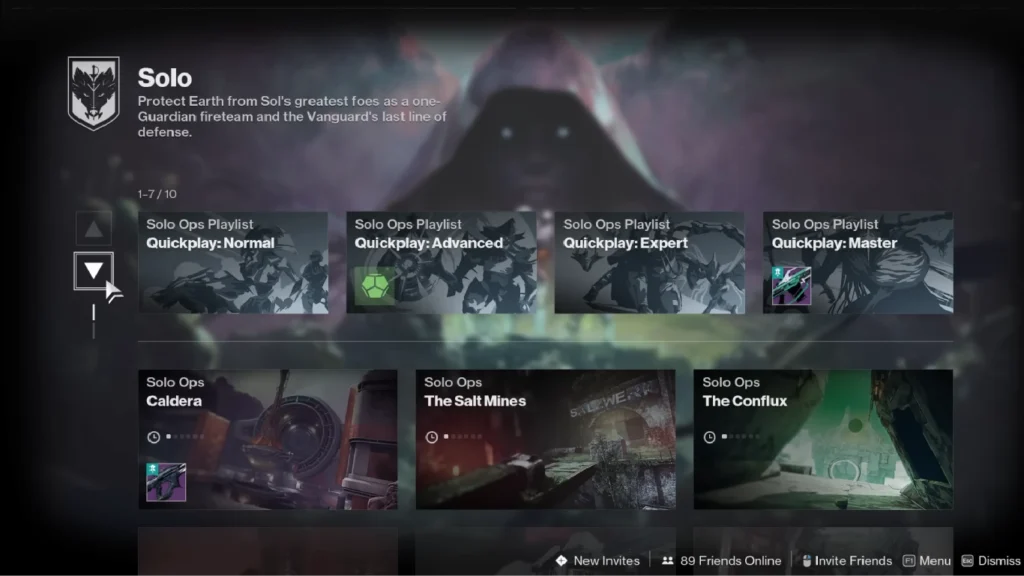
Bungie has implemented a soft power reset with The Edge of Fate, bringing all players to a baseline 1900 power level. The new Portal system replaces the traditional seasonal artifact, providing a more visual and intuitive way to track your progression through various activities.
The Portal branches into five different paths: Combat, Exploration, Mysticism, Technology, and Community.
Each path offers meaningful upgrades and unlocks, though the Mysticism branch feels significantly more rewarding than others. As one community manager noted: “The Portal makes progression clearer for new players, but the complexity can still leave newcomers feeling overwhelmed.” This rings true – while the system is more transparent than previous iterations, it still requires external guides to optimize effectively.
The new armor set bonuses tied to matter manipulation abilities are genuinely game-changing. The Voidwalker set provides reduced cooldowns for Matterspark, while Phasestrider armor enhances Relocator range. These sets make the new abilities feel more integral to your playstyle rather than situational gimmicks.
Open World Design
Kepler, the expansion’s new destination, presents a mixed bag of exploration and environmental storytelling. The setting – a massive space station orbiting Neptune that’s been partially consumed by matter-distorting technology – should be visually spectacular. Unfortunately, the execution feels underwhelming compared to recent destinations like Europa or The Pale Heart.
The station’s layout prioritizes verticality, which works well with the new traversal abilities, but many areas feel empty and underutilized. Large corridors lead to small rooms with minimal interaction opportunities, and too many spaces exist purely for traversal rather than meaningful content.
The industrial aesthetic becomes repetitive after several hours, lacking the visual variety that made exploring The Dreaming City or The Throne World so compelling.
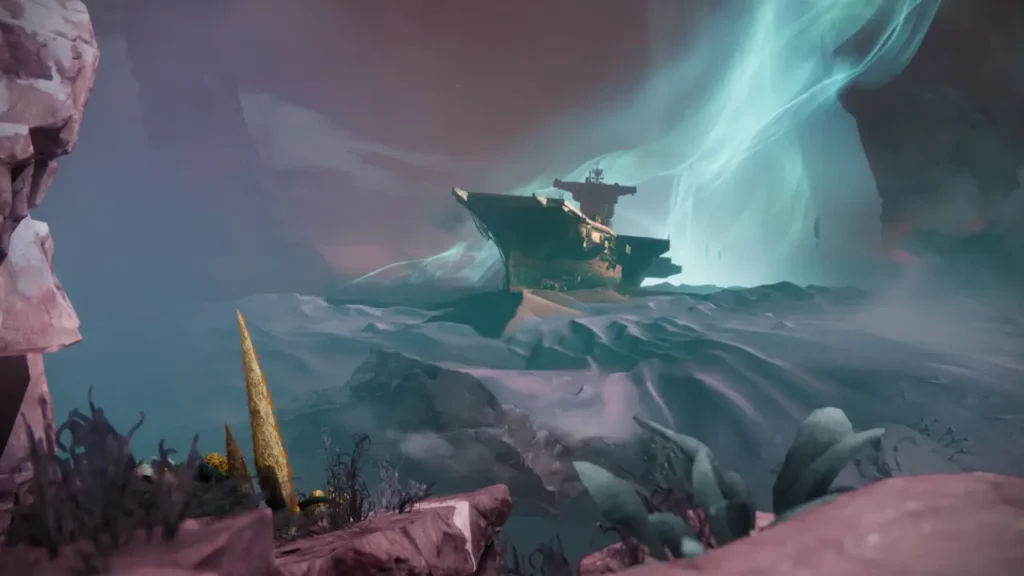
That said, the central hub area called The Observatory is genuinely impressive. This massive spherical chamber with floating platforms and shifting matter streams creates a unique social space that feels alive and dynamic. Public events here are more engaging than the standard “kill everything” formula, requiring coordination with other players to manipulate matter streams and solve environmental puzzles.
The patrol missions and lost sectors on Kepler suffer from familiar Destiny issues – too much repetition and not enough meaningful rewards. After completing dozens of “collect matter samples” or “eliminate high-value targets” missions, the activities start feeling like busy work rather than engaging content.
Key Takeaway:
- Kepler offers impressive verticality and a standout social hub, but suffers from repetitive patrol content and underutilized spaces that feel more like corridors than living environments.
Graphics and Technology
The Edge of Fate showcases both Bungie’s artistic strengths and their tendency to rely on asset reuse. The matter-distortion effects throughout Kepler are genuinely stunning, creating otherworldly visuals as reality bends and shifts around you.
Watching solid walls become translucent, then fully incorporeal, never gets old. The particle effects during Matterspark activation and the ethereal glow of Nine-influenced areas demonstrate top-tier visual design.
However, too many environments recycle familiar Destiny 2 assets with new textures applied. Hallways and room layouts from previous expansions appear throughout Kepler, sometimes with minimal modification. While this isn’t inherently problematic – asset reuse is common in game development – it does diminish the sense of exploring truly new territory.
The character models for The Nine deserve special recognition. Rather than taking the easy route of making them completely abstract, Bungie created designs that suggest both corporeal and incorporeal existence simultaneously.
Their forms shift between matter states during conversations, and their animations convey otherworldly grace while maintaining recognizable humanoid characteristics.
The Desert Perpetual raid showcases the expansion’s visual design at its best. Each encounter takes place in increasingly surreal environments where matter physics break down completely. The final boss arena, where players fight while phasing between multiple reality states, creates some of the most visually impressive moments in Destiny 2’s history.
Key Takeaway:
- Visual highlights like matter-distortion effects and The Nine’s character models showcase Bungie’s artistic talent, though asset reuse diminishes the impact of exploring new territory.
Technical Performance
From a stability perspective, The Edge of Fate launches in better condition than many recent Destiny 2 expansions. We experienced minimal crashes during our playthrough, and loading times remain reasonable across all platforms. The new abilities integrate smoothly into the existing framework without causing significant frame rate drops or input lag.
However, some bugs persist that can impact gameplay flow. Matterspark occasionally fails to activate when interacting with specific environmental objects, and we encountered several instances where Relocator teleported us outside the intended play area. These issues aren’t game-breaking, but they’re frequent enough to cause frustration during crucial moments.
Raid performance deserves particular mention, as six-player activities typically stress Destiny 2’s networking more than standard content. The Desert Perpetual runs smoothly for the most part, though the reality-shifting mechanics in the final encounter can cause temporary frame drops on older hardware.
Console players report generally stable performance, while PC players with mid-range systems may need to adjust settings for optimal experience during the most visually intensive sequences.
Post-Game & Replayability
Beyond the campaign, The Edge of Fate offers a substantial amount of endgame content, though with varying levels of quality. The expansion includes twelve new side quests, most of which unfortunately fall into the familiar “fetch quest” category that has plagued Destiny 2 for years.
“Memories of Matter” requires collecting 50 matter fragments scattered across Kepler, while “Echoes of The Nine” sends you to revisit previous destinations to scan specific objects.
These quests provide lore rewards and exotic catalysts, but the gameplay loop feels tedious rather than engaging.
The Desert Perpetual raid stands as the expansion’s crowning achievement. This six-encounter raid challenges fireteams to master matter manipulation mechanics while dealing with increasingly complex enemy patterns.
Each encounter builds upon the previous one, culminating in a final boss fight that requires perfect coordination between all six players as they navigate shifting reality states.
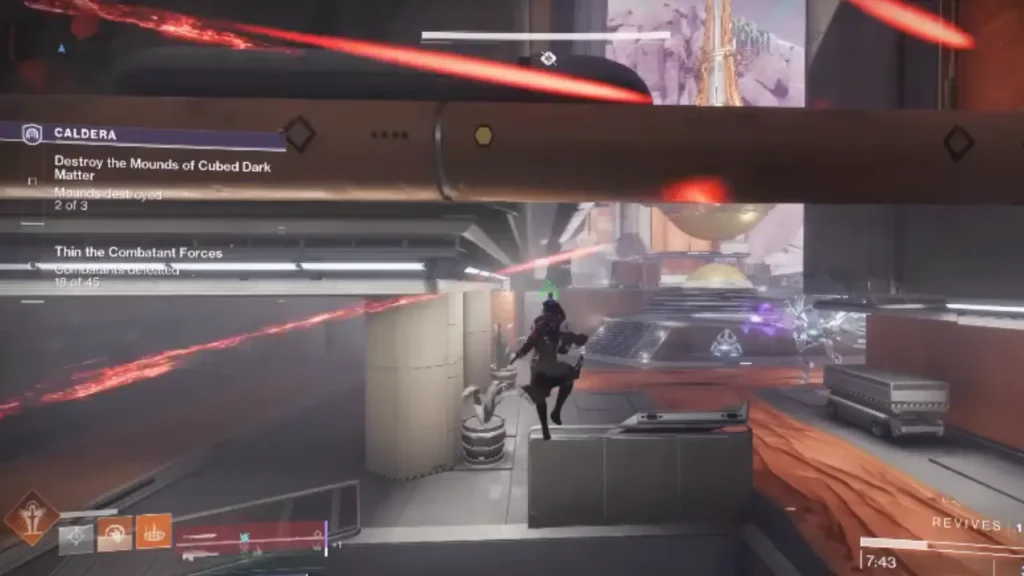
The raid’s difficulty feels perfectly tuned – challenging enough to require multiple attempts for most teams, but not so punishing that casual raiders will give up in frustration. We spent roughly eight hours on our first clear, with each encounter providing distinct mechanics that kept the experience fresh throughout.
New exotic quests tied to The Nine provide some of the expansion’s most rewarding content. “The Weight of Nothing” exotic quest chain spans multiple weeks and requires completing various activities while using specific matter manipulation abilities.
The final step involves a solo mission that rivals the best of Destiny 2’s challenging solo content, culminating in the exotic trace rifle Null Hypothesis – a weapon that manipulates matter states to deal increasing damage.
Key Takeaway: While side content often feels repetitive, the raid and exotic quests provide substantial challenges that will keep dedicated players engaged for months.
Community Reception
The Destiny 2 community’s response to The Edge of Fate has been notably mixed, reflecting the expansion’s uneven quality across different aspects. Long-time players generally praise the lore developments and The Nine’s characterization, with many Reddit threads highlighting favorite story moments and theories about future content directions.
The campaign’s emotional beats, particularly Lodi’s character arc, have resonated strongly with the dedicated fanbase.
However, criticism has been equally vocal regarding the expansion’s technical issues and repetitive side content. Popular Destiny 2 content creators have expressed frustration with the inconsistent matter manipulation abilities, and the #DestinyFeedback hashtag on Twitter frequently features complaints about Kepler’s environmental design.
Many players feel that while the expansion introduces interesting concepts, the execution doesn’t match the ambition.
The raid has received almost universal praise from the community. Sherpa runs and teaching guides have proliferated across YouTube and Twitch, with many considering The Desert Perpetual among Destiny 2’s best raids.
The mechanics strike an excellent balance between accessibility and complexity, making it enjoyable for both casual and hardcore raiders.
Critics from major gaming publications have echoed many community sentiments. IGN’s review praised the lore and raid design while criticizing the campaign pacing and technical issues. GameSpot highlighted the visual design achievements but noted concerns about content repetition.
The general critical consensus seems to be that The Edge of Fate succeeds in areas where Destiny 2 typically excels – gunplay, raid design, and world-building – while struggling with familiar problems like quest variety and technical polish.
Destiny 2: The Edge of Fate Conclusion
Destiny 2 The Edge of Fate represents both the series’ continued strengths and its persistent growing pains. When this expansion hits its stride – during emotional story beats, challenging raid encounters, or moments when the matter manipulation abilities work flawlessly – it reminds you why Destiny 2 remains one of the most compelling online shooters available.
The lore developments surrounding The Nine provide fascinating new directions for the franchise, and The Desert Perpetual raid ranks among Bungie’s finest encounter design.
However, the expansion also highlights areas where Destiny 2 continues to struggle. Technical inconsistencies with new abilities, repetitive side content, and uninspired environmental design in portions of Kepler prevent The Edge of Fate from reaching the heights achieved by The Final Shape.
While this expansion offers enough quality content to satisfy dedicated Guardians, it doesn’t quite capture the magic that made its predecessor feel essential.
For existing Destiny 2 players, The Edge of Fate provides worthwhile content that advances the narrative in meaningful ways and introduces genuinely innovative mechanics when they function properly.
New players might want to wait for a sale or additional content updates that address some of the current technical issues. We’d recommend this expansion to fans of the franchise, but with the understanding that it represents a solid, if imperfect, addition to the Destiny 2 universe rather than a revolutionary leap forward.
Final Score: 7.5/10 – A competent expansion with brilliant moments held back by technical issues and repetitive content design.
FAQs
Is The Edge of Fate good for new players?
Not recommended for newcomers. The expansion assumes familiarity with Destiny 2’s core systems and progression mechanics. Complete at least one previous campaign first.
How long is the campaign?
8-12 hours depending on playstyle. Rush through for 8 hours, or take your time exploring for 12 hours. Legendary difficulty adds 2-3 more hours.
Is Legendary difficulty worth it?
Yes for experienced players. Better rewards and makes new abilities feel essential, but can be frustrating due to ability bugs. Try Normal difficulty first.
What’s included in the Collector’s Edition?
Base expansion, season pass, exotic ornaments, physical replica of Lodi’s device, lore book, and bonus vault space for $99.99. Worth it only for collectors.
Do I need to complete The Final Shape to play The Edge of Fate?
Highly recommended but not required. Many story references and emotional moments won’t hit the same without that context. Some mechanics also carry over.

